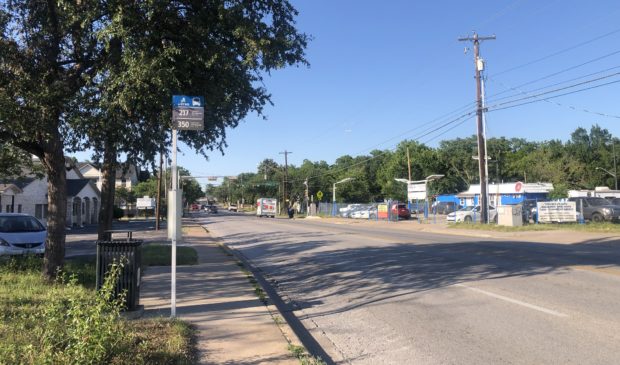Why your bus may be delayed and what Cap Metro is doing about it
Friday, May 27, 2022 by
Samuel Stark As Covid-19 cases wane and people return to the office, bus ridership is back up to 65 percent of its pre-lockdown levels, Capital Metropolitan Transportation Authority said. But many folks who rely on the bus say delays and cancellations make their commute difficult.
At its board of directors meeting Monday, Capital Metro execs admitted that they still have more to do to achieve an acceptable level of service. In an operations update, Andrew Skabowski, Capital Metro’s chief operating officer, said the issues boil down to people, parts and processes.
“Things like the number of mechanics, number of bus operators, parts supply shortages, training needs (and) process improvements … they all tie back to performance,” Skabowski said.
Many Austinites take the bus not because they like to but because they have to, relying on public transportation to go to work, run errands or go to school.
“There were some scheduled routes that didn’t get (where they needed to be) when they were supposed to. That was multiple times,” Pablo Hernandez, who lives in the Montopolis neighborhood, said. “I’d be waiting for maybe 30 minutes and they wouldn’t get there. That’s not good for me because that made me either late for work or just backed up on my errands.”
Isabella Luna relies on the bus to get to UT Austin, where she is getting a degree in music studies.
“Some routes (I rely on) are less frequent. So, if a bus doesn’t come, it adds a huge amount of time to the commute,” Luna said.
Capital Metro has been working hard to mitigate the issues that contribute to these delays.
The lack of operators and mechanics is an industrywide issue, but Capital Metro has hired 156 new operators and mechanics since January to address the deficit.
“(For) operating staffing right now, we have what we need …. We’re trailing a little bit on the mechanic side,” Skabowski said.
The pandemic has made it more difficult for Capital Metro to get the parts it needs – a problem many other industries are having. Vendors may be out of certain parts needed to fix defective vehicles. Other vendors that have the parts will limit the amount a buyer can purchase. Five to 7 percent of Capital Metro’s fleet of buses is currently out of service due to missing parts.
“It should be at around 2 to 3 percent,” Skabowski said. “The parts team and the procurement team (have) been working different angles to try to find alternate sources for supply.”
The issues Capital Metro faces lead to what it calls “lost time,” which refers to the hours lost from a bus being delayed or not showing up at all. Every 1 percent of lost time equates to about 40 hours of service lost in a day. Capital Metro calculated that around 15 percent of its service qualified as lost time in January. Through considered effort, the transit agency brought this percentage down to just over 10 percent in April and is forecasting it to be around 5 percent this month.
Capital Metro hopes to use the lull in ridership over the summer to improve service for when it increases again in the fall.
Though the delays can be frustrating, Luna said she is grateful for the service Capital Metro provides. “I definitely appreciate Cap Metro for existing, because I could not get around without it,” she said.
The Austin Monitor’s work is made possible by donations from the community. Though our reporting covers donors from time to time, we are careful to keep business and editorial efforts separate while maintaining transparency. A complete list of donors is available here, and our code of ethics is explained here.
You're a community leader
And we’re honored you look to us for serious, in-depth news. You know a strong community needs local and dedicated watchdog reporting. We’re here for you and that won’t change. Now will you take the powerful next step and support our nonprofit news organization?







